Latest update November '25 - Smarter Gap Reports & Clearer System Builder (Direct Emissions Nodes)
We’re excited to introduce two major improvements that make your carbon accounting workflow clearer, faster, and easier to verify:
(1) A new AI-powered System Status Report, and
(2) Direct Emissions displayed as standalone nodes for complete system transparency.
Both updates are designed to give you instant clarity, fewer surprises during verification, and a more intuitive system layout.
1. AI-Powered System Status Report
Quickly understand how complete and verification-ready your system is — before you submit it.
What it does
With one click, CarbonSig now scans your entire system and generates an AI-driven GAP Report that highlights:
- Missing or incomplete data
- Gaps in system boundaries
- Missing emission factors or quantities
- Incomplete documentation or notes
- Methodological inconsistencies
- Data quality issues in your LCI inputs
- You immediately see what’s missing, why it matters, and what to do next.
How to use it
- Open any system
- Click Create New System Status Report
- Wait ~1 minute
- Report opens in a new tab (HTML)
- Download or print it anytime
- Available in Builder, Data Entry, and Analysis tabs.
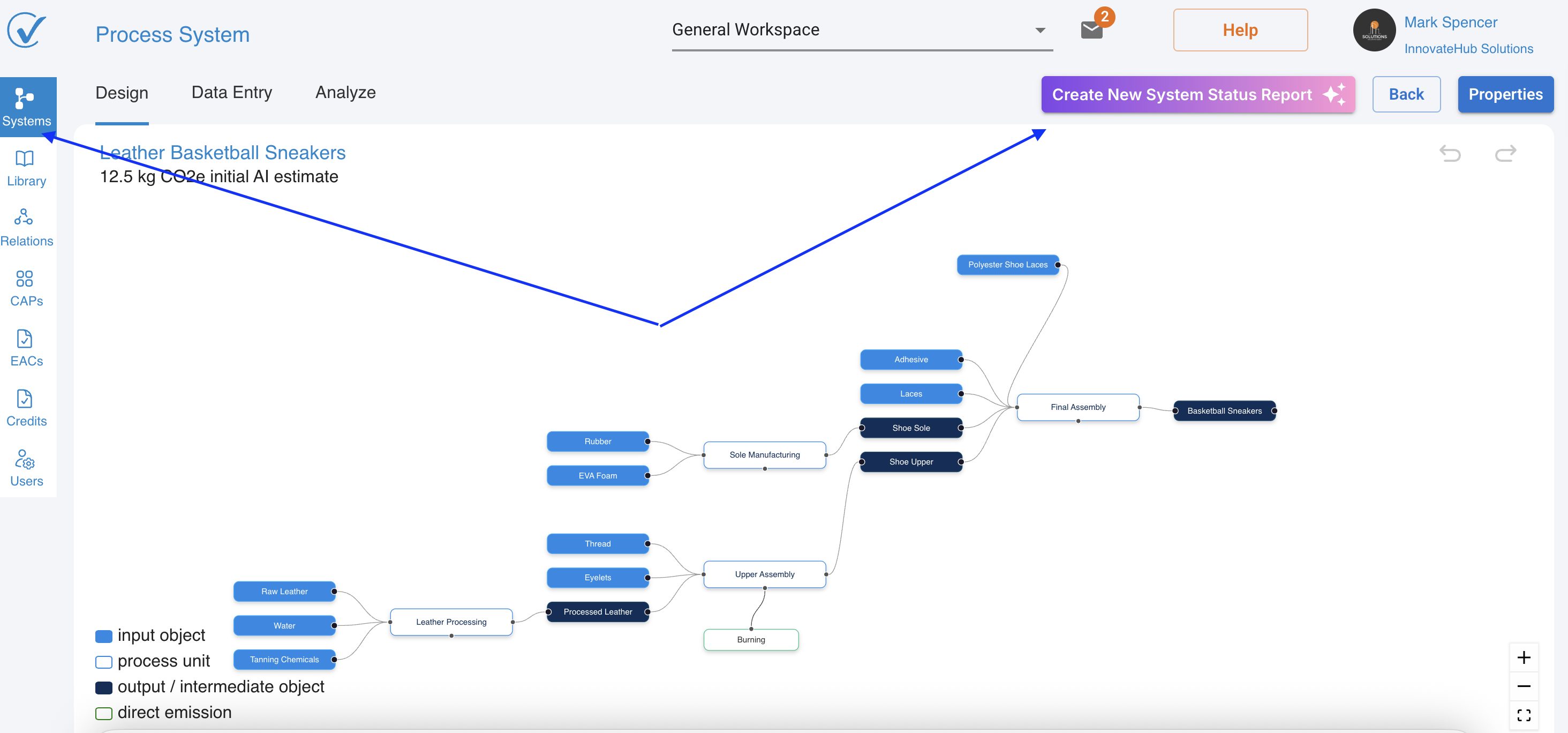
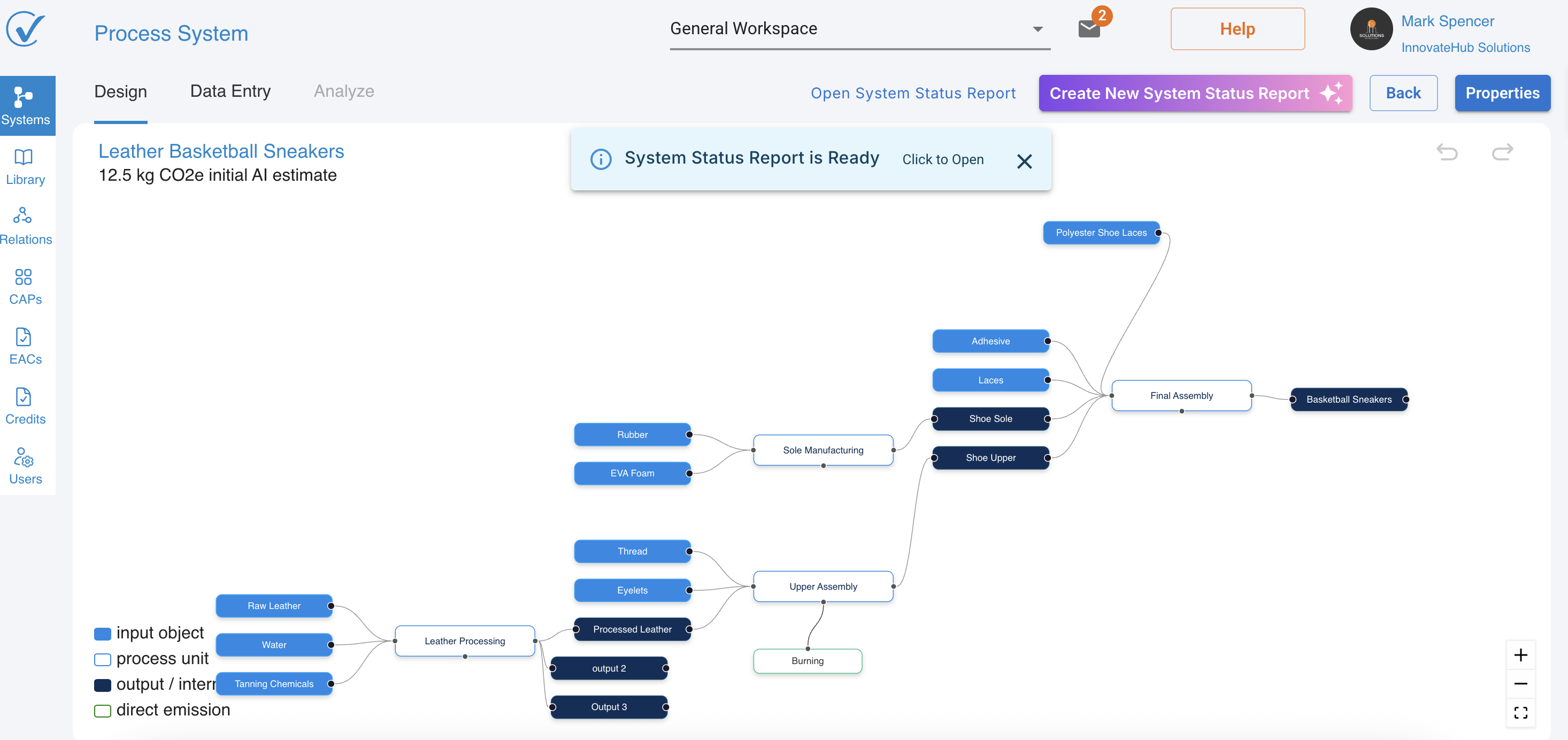
What the report includes
- Executive summary of your system
- Process-by-process review
- Red flags and improvement opportunities
- Missing LCI data
- Recommended next steps
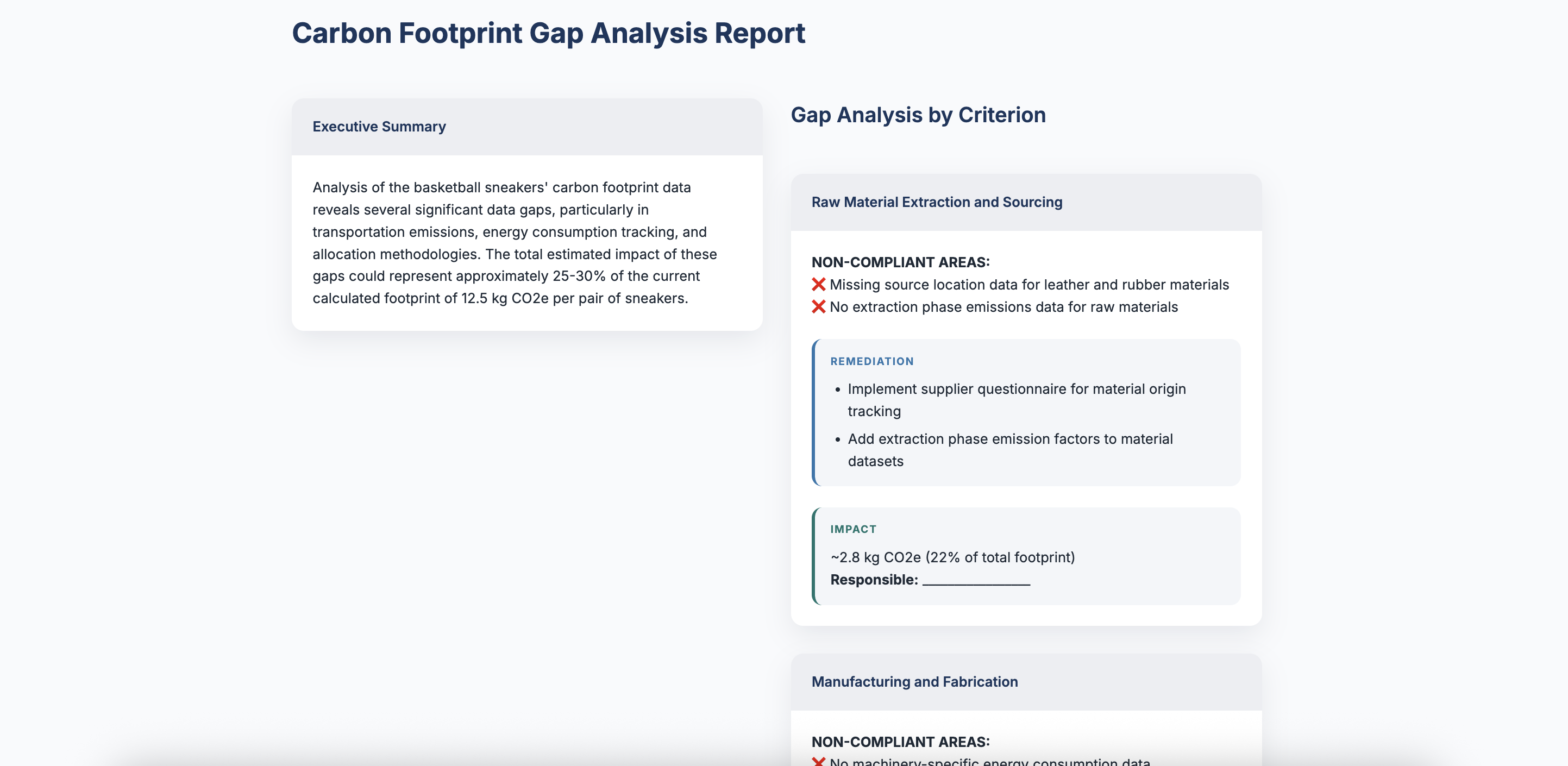
2. Direct Emissions Are Now Separate Nodes
Your process map just got much clearer.
What changed
Direct emissions used to be hidden inside process nodes. This made them hard to track, manage, or visually understand.
From now on, direct emissions appear as independent nodes positioned directly below their parent process.
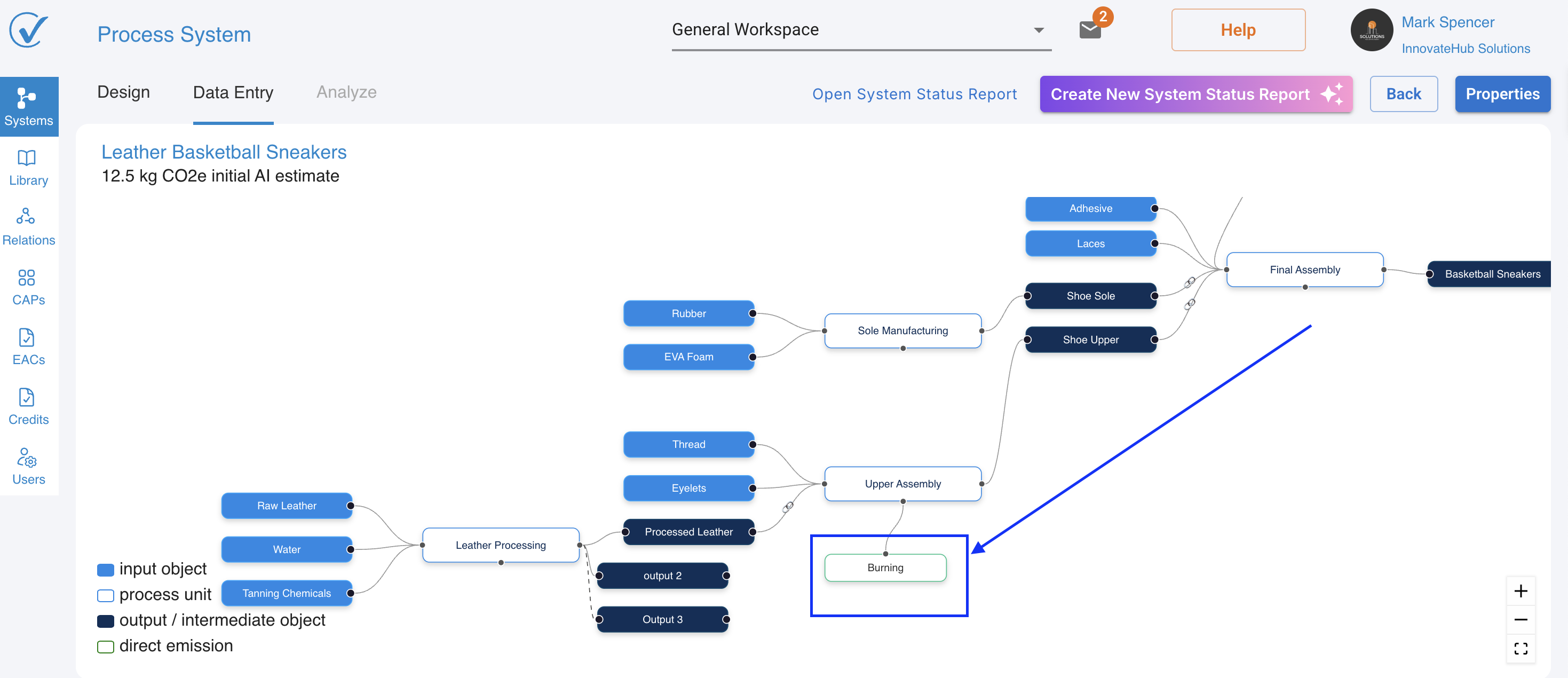
This gives you:
- Cleaner and more accurate system layouts
- A clear view of all emission sources
- Easier cross-checking during Data Entry
- Better readiness for verification and reporting
How it works
In Design mode
Right-click any process → Add Direct Emission
You can define:
- Title
- Source category
- Determination method
- Each direct emission becomes a separate visual node with its own connection line.

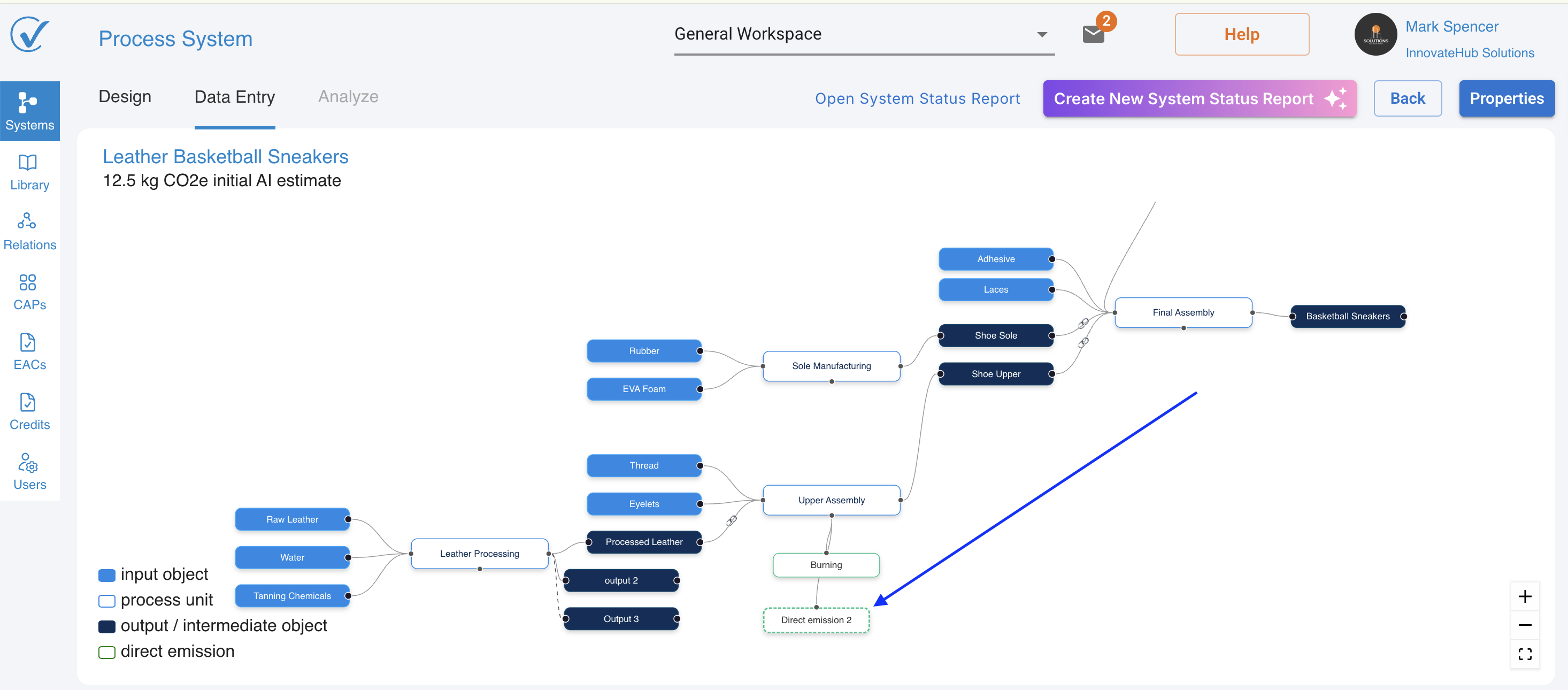
In Data Entry
You can edit:
- Reference emission data
- Amount
- Carbon intensity
- Total embodied emissions
- Conversion factors (now fully supported in Direct Emission nodes)
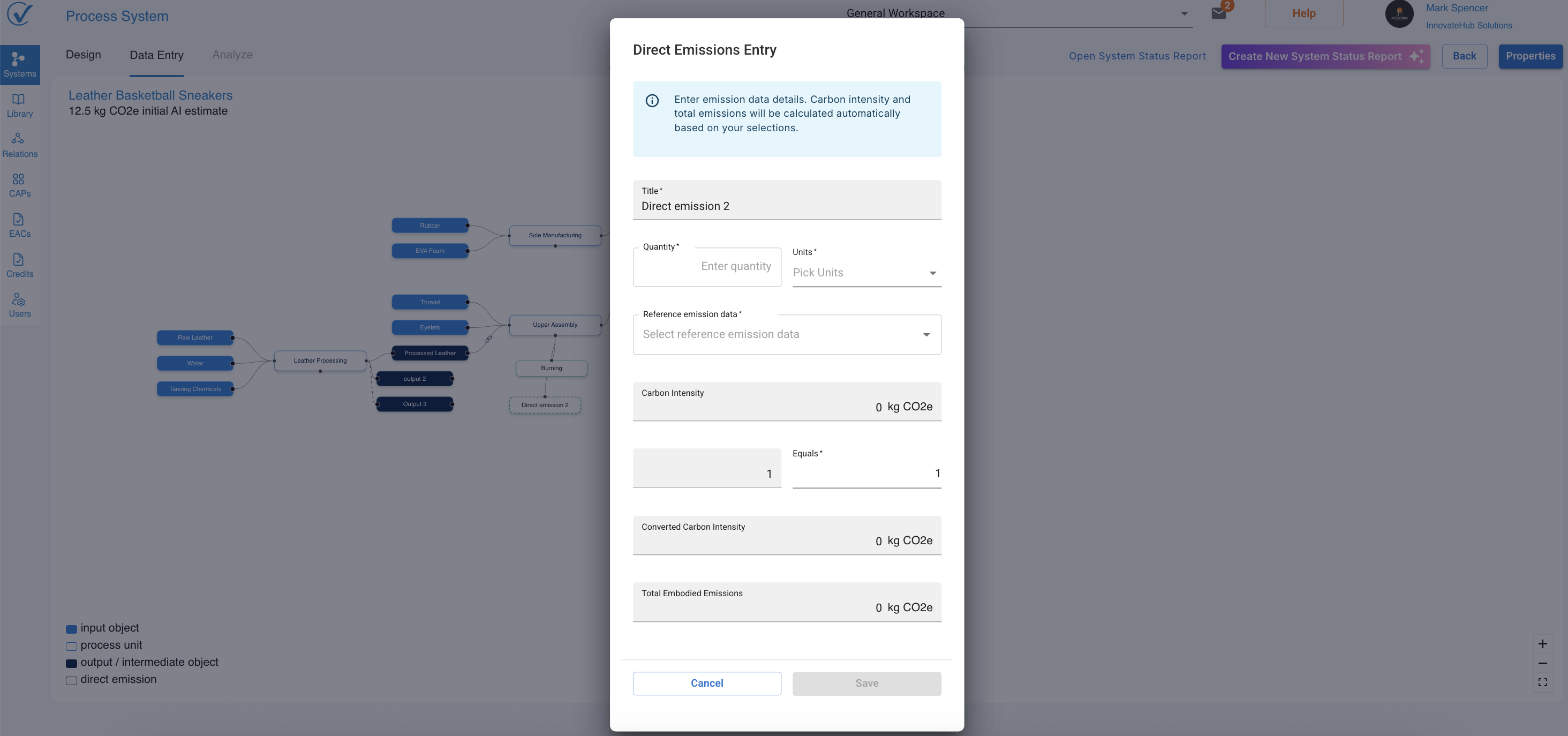
System behavior
- Existing systems remain intact — all previous direct emissions were migrated safely
- New nodes follow the updated CarbonSig 2025 UI
- Multiple direct emissions per process are supported
- Layout adjusts automatically
💡 Why this matters
These two updates work together to give you:
✔ A cleaner, more accurate system structure
✔ Instant visibility into missing data
✔ Fewer verification cycles
✔ Less manual review time
✔ A more intuitive System Builder experience
Your systems will now be easier to build, easier to review, and easier to trust.
🚀 Coming Next
- Enhanced LCI suggestions using full system context
- Workbook approach for upfront data collection
- Improved unit conversion logic
- New node states & color logic
Feedback & Support
We value your feedback as we continue to enhance CarbonSig. If you have questions or suggestions regarding these updates:
- Contact our support team at support@carbonsig.com
- Submit feature requests through the in-app feedback tool
Thank you for being part of the CarbonSig community. Together, we're building a more sustainable future.

